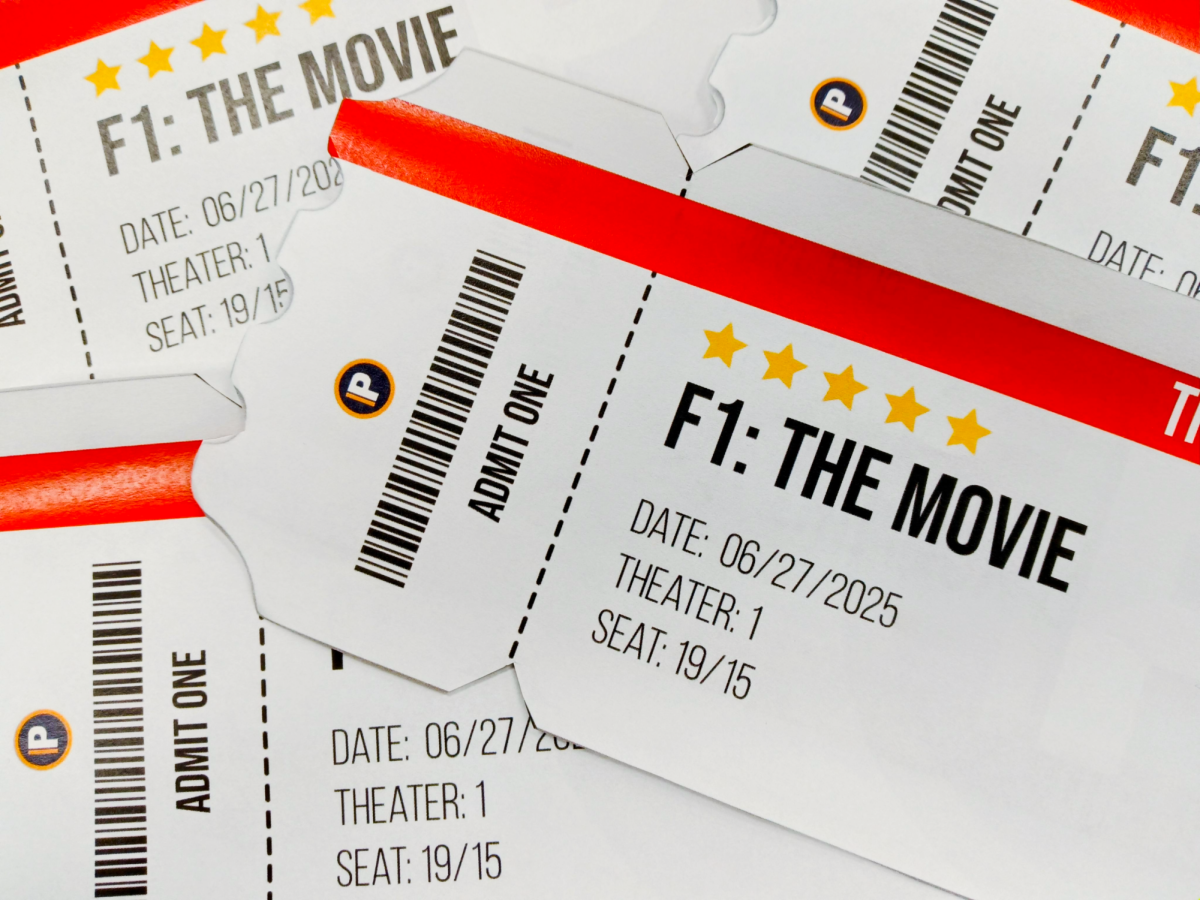“F1: The Movie” arrived in theaters after a year of anticipation, especially from Formula One (F1) fans who were ready to scrutinize every detail and eager to point out any inaccuracies to see if Hollywood had actually sensationalized the sport. But, the real letdown wasn’t the racing at all.
Directed by Joseph Kosinski, the film stars Brad Pitt as Sonny Hayes, a washed-up driver who has been retired from F1 for 30 years. The movie follows APXGP, a fictional team, featuring Damson Idris as Joshua Pearce, a talented but immature rookie, and Kerry Condon as Kate McKenna, the team’s technical director and the first and only woman to hold that title in the film’s F1 universe.
The movie was one of the most anticipated releases of the summer and had a strong opening weekend making $140 million globally and $55.6 million in the United States .
While the movie was met with mixed reactions, it got several things right, including the cinematography.
It is clear Kosinski went to great lengths to achieve as much realism as possible. Pitt and Idris trained in Formula Two (F2) cars which were modified to resemble F1 cars. Seven-time world champion, Lewis Hamilton, served as a producer for the movie. Scenes were filmed during real races in the 2024 season, including Silverstone, the Las Vegas Strip Circuit and the Yas Marina Circuit in Abu Dhabi. Several F1 drivers and team principals appeared as themselves, as did Sky Sports F1 commentators Martin Brundle and David Croft. Presenters Will Buxton and announcer Leigh Diffey were also involved in the film.
While there were technical inaccuracies, they likely stemmed from limited run-time. The setting itself only left nine races for the team to improve their performance. Some plot points would have led to major penalties and even disqualifications, but the movie prioritized pacing and character arcs over strict accuracy.
That said, small inaccuracies were not the film’s biggest problem.
The most disappointing aspect of the movie was its portrayal of the female characters. While the movie made it clear that they were aiming to showcase the growing role of women in motorsports by highlighting four female team members, those efforts were undermined almost immediately.
McKenna, the groundbreaking technical director, ends up romantically involved with Hayes despite repeatedly insisting she would never date someone on the team, especially someone as arrogant and difficult as him. Her reversal feels forced, reinforcing the trope that a woman in power can’t exist in a male-dominated field without being reduced to a love interest.
Then there’s Jodie played by Callie Cooke, the only female member of the pit crew whose primary arc involves a series of mistakes, including one during a pit stop that ruins Pearce’s race. The intended message seems to be about learning from failure and escaping self-doubt. But, in a sport where women are already hyper-criticized, having the only female mechanic repeatedly mess up only reinforces harmful perceptions, ones that are already used to exclude women from the sport.
A smaller but still frustrating moment occurs when a woman approaches Pearce at a nightclub to ask if he can introduce her to real-life F1 driver Carlos Sainz. It’s a joke that is intended for laughs but doesn’t land when you consider how often women are told they only like F1 because they find the drivers attractive. The scene feels like it’s playing into the stereotypes rather than challenging them.
F1 offers built-in drama with rivalries, jealousy and high-stakes competition; the movie even added unresolved family dynamics. Both Hayes and Pearce lost their fathers at age 13, hinting at an emotional storyline about chasing a shared dream that could’ve been explored more deeply. Instead, I feel like we got a romantic subplot and gendered mishaps that felt unnecessary.
By the end of the film, I felt entertained, but also like I had just watched a high-budget Brad Pitt fanfiction. Speaking of Pitt, his casting is arguably the biggest inaccuracy of all. A 61-year-old F1 driver simply wouldn’t be realistic given the sport’s physical demands.
If viewers are genuinely interested in learning about F1, this film could be a decent start. It is visually stunning and action-packed, but the best way to experience F1 is to watch the real thing. The sport itself already has all the intensity, emotion and excitement the big screen could ever hope to capture, without needing to fall back on old, tired tropes.
Ximena Cordero is the web and copy editor for The Prospector and may be reached at [email protected]







